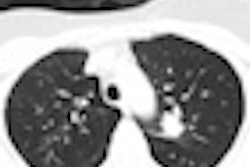Driven by smoking, lung cancer is likely to overtake breast cancer as the leading cause of cancer death for European women by 2015, according to a study published in Annals of Oncology. In fact, in Poland and the U.K. it already has, the researchers found.
The study looked at cancer rates in the whole of the European Union (27 member states as of 2007) and also in six individual countries: France, Germany, Italy, Poland, Spain, and the U.K. The research covered incidence rates for all cancers, as well as individually for stomach, intestine, pancreas, lung, prostate, breast, uterus (including cervix), and leukemia.
The lead author of the study was Matteo Malvezzi, PhD, from the department of epidemiology at Istituto di Ricerche Farmacologiche "Mario Negri" in Milan (Ann Oncol, 12 February 2013). This is the third consecutive year the researchers have published predicted EU cancer deaths.
The researchers estimated numbers of deaths and age-standardized (world) mortality rates in 2013 from all cancers and selected cancers, using statistical models and the World Health Organization (WHO) mortality and population database.
More than 1.3 million people will die from cancer (737,747 men and 576,489 women) in the 27 European Union countries in 2013, the researchers predicted. Although the actual numbers have increased compared to 2009, the cancer death rate has actually declined. Since 2009, there has been a 6% decline among men and a 4% fall among women.
However, despite the decline in cancer deaths overall, lung cancer death rates continue to rise among women in all countries, while breast cancer death rates fall, according to the researchers. In 2013, there will be an estimated 88,886 deaths (14.6 per 100,000 women) from breast cancer and 82,640 deaths (14 per 100,000 women) from lung cancer. Lung cancer deaths have risen by 7% among women since 2009.
What this means for radiologists is more lung cancer screening exams in their future, particularly for women.
"If these opposite trends in breast and lung cancer rates continue, then in 2015 lung cancer is going to become the first cause of cancer mortality in Europe," said co-author Dr. Carlo La Vecchia, also from the Mario Negri Institute, in a statement. "This is already true in the U.K. and Poland, the two countries with the highest rates: 21.2 and 17.5 per 100,000 women, respectively."
The rise of lung cancer for women in the U.K. may reflect the increased prevalence of young women who started smoking in the late 1960s and 1970s, according to La Vecchia.
"However, fewer young women nowadays in the U.K. and elsewhere in Europe are smoking, and, therefore, deaths from lung cancer may start to level off after 2020 at around 15 per 100,000 women," he said.
Breast cancer deaths, on the other hand, have been steadily declining, with a 7% fall in rates since 2009 in the EU, which reflects advances in treatment as well as screening and early diagnosis, La Vecchia said.
Lung cancer is still the main cause of cancer death among men, with nearly 187,000 deaths predicted for 2013, giving a death rate of 37.2 per 100,000 men. However, this represents a 6% fall since 2009.
"The key message for EU national governments from this study is tobacco control, particularly among middle-aged men and women, i.e., the European generations most heavily exposed to smoking," added co-author Dr. Fabio Levi, head of the Cancer Epidemiology Unit at the Institute of Social and Preventive Medicine, Centre Hospitalier Universitaire Vaudois and University of Lausanne, Switzerland, in a statement. "If more people could be helped and encouraged to give up smoking, or not to take it up in the first place, hundreds of thousands of deaths from cancer could be avoided each year in Europe."
Other measures to help prevent cancer deaths include controlling obesity and alcohol abuse, along with optimizing cancer diagnosis and treatment, he said.



















